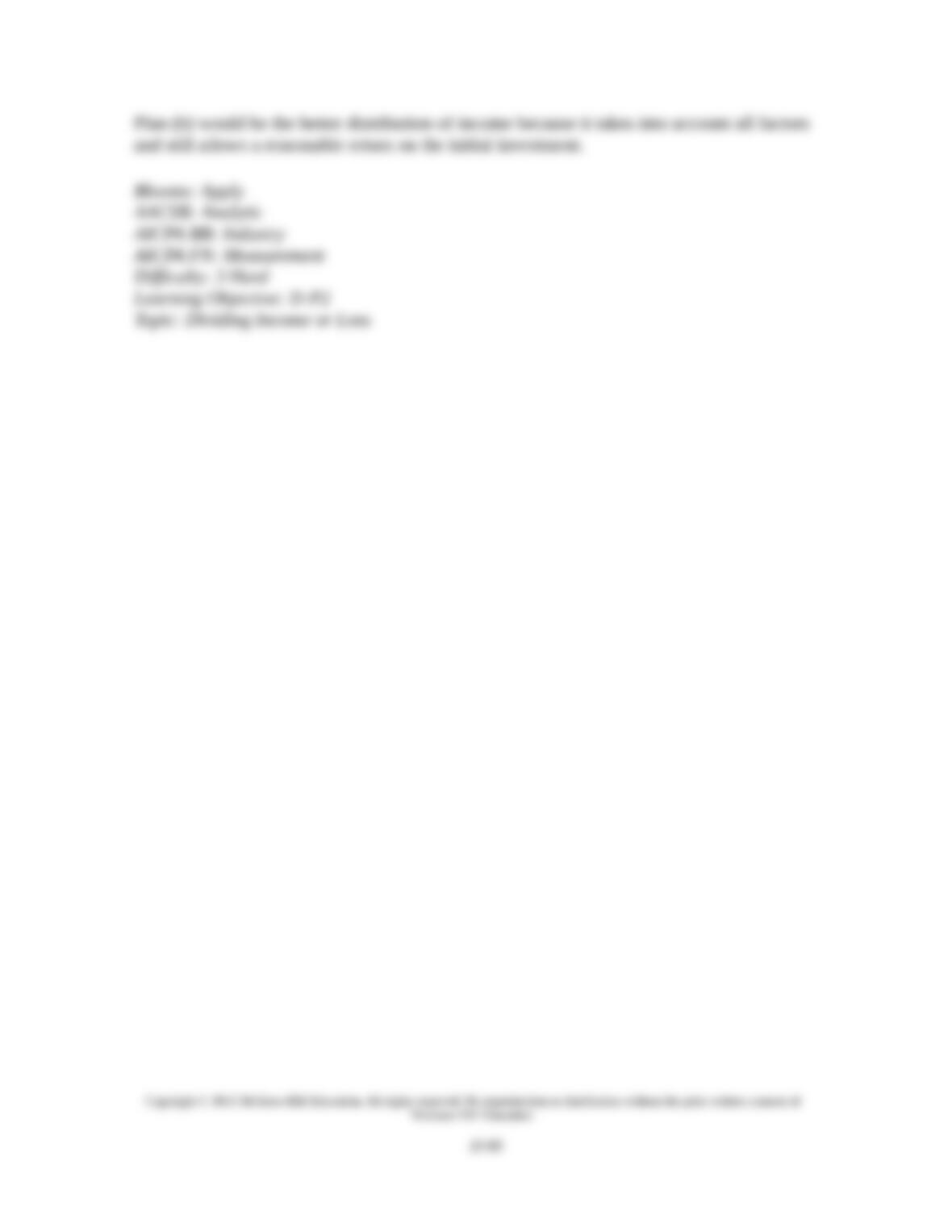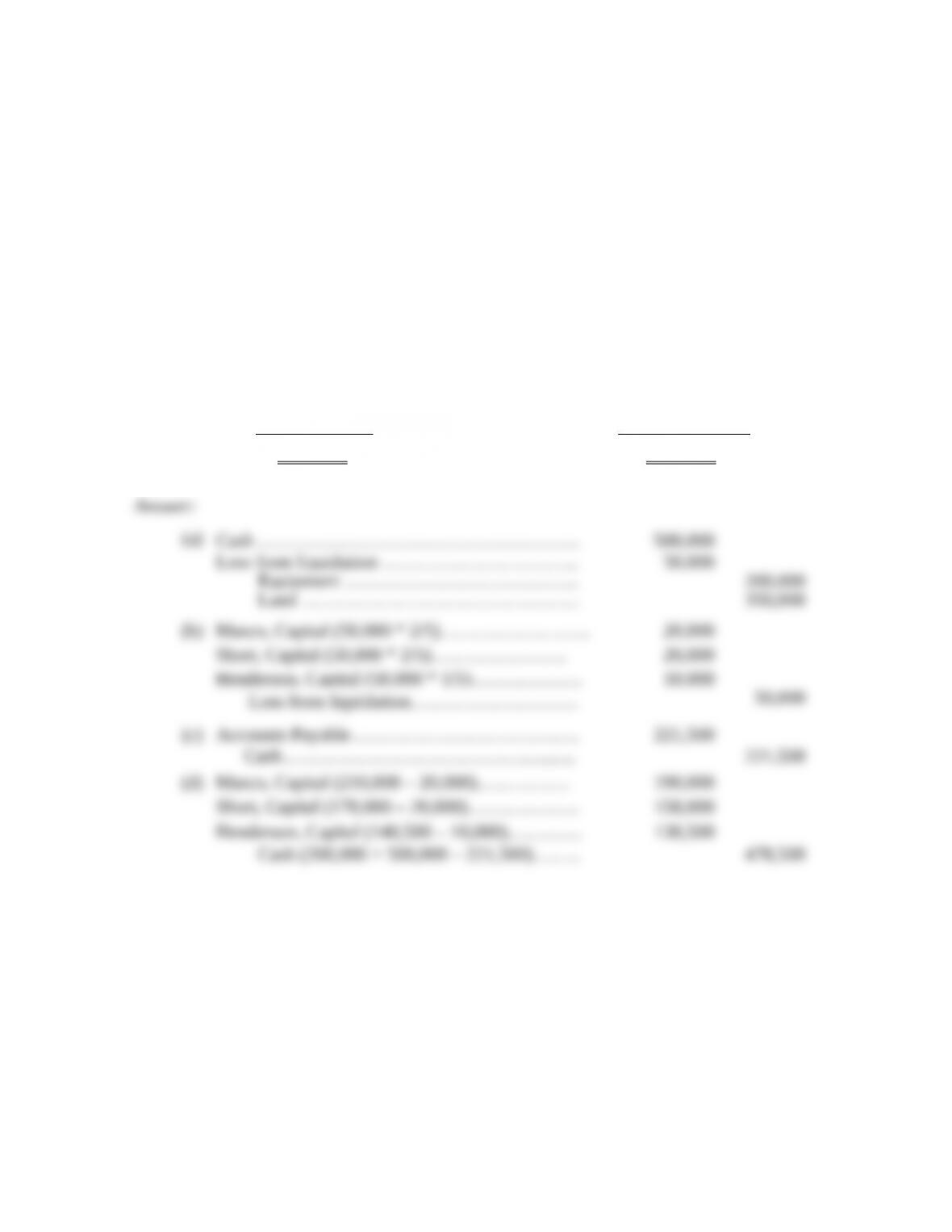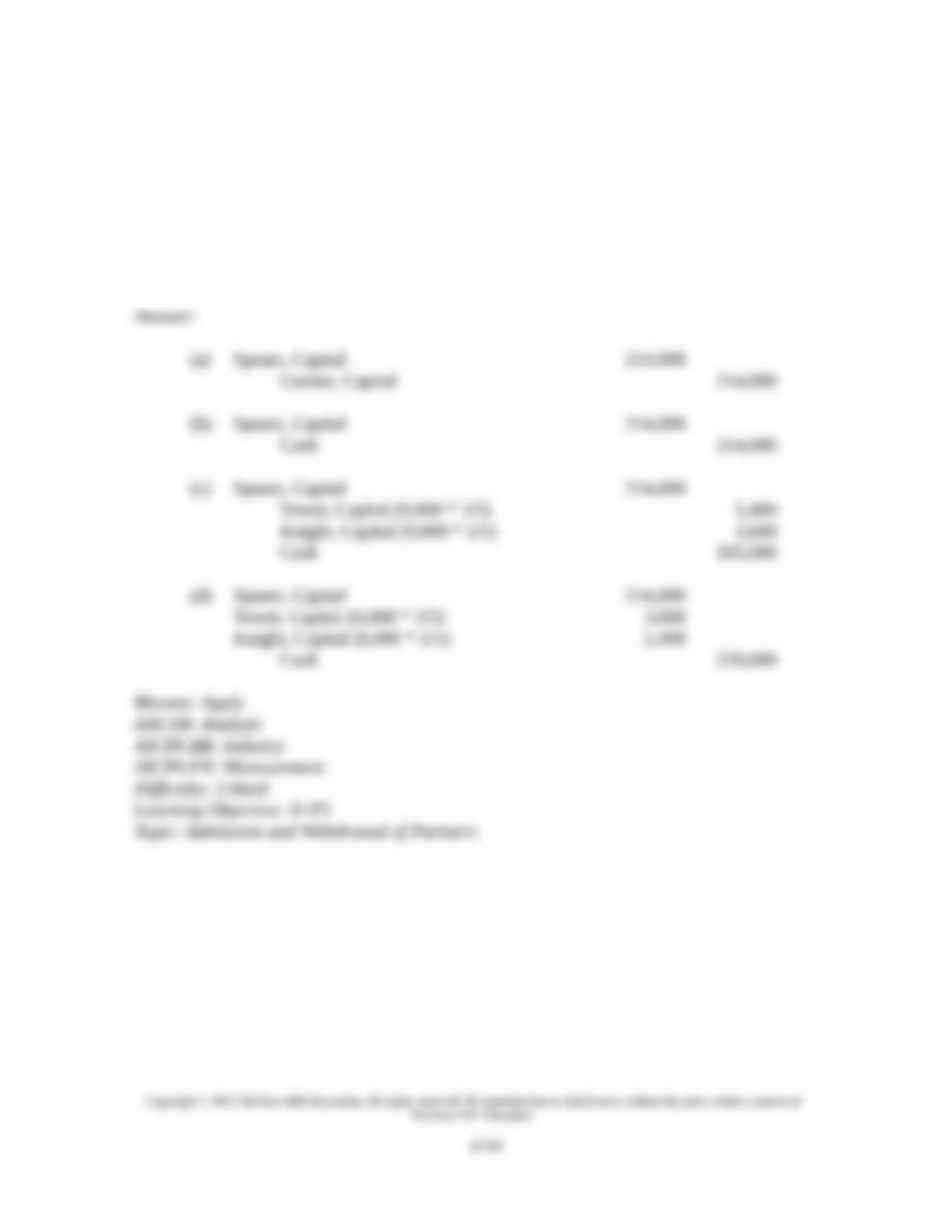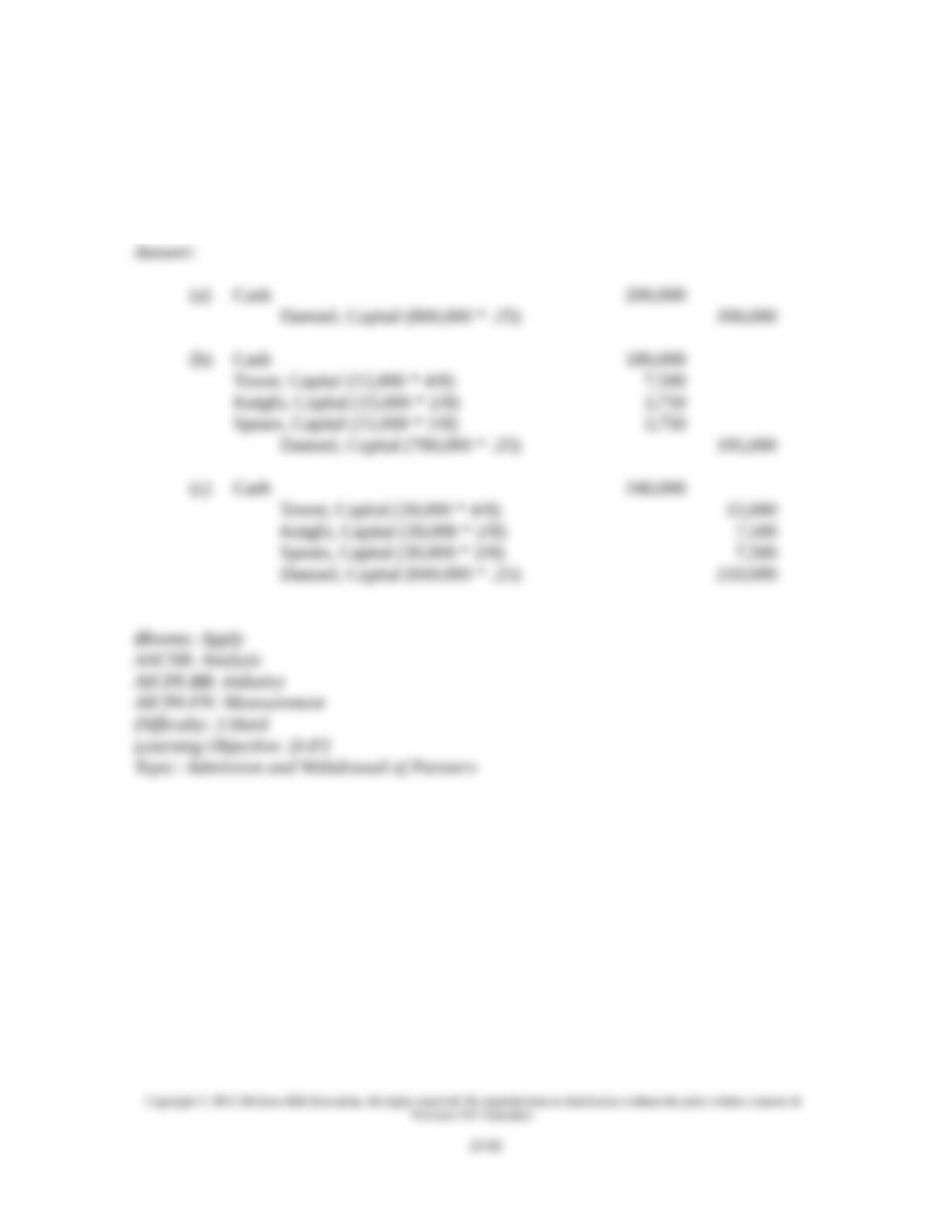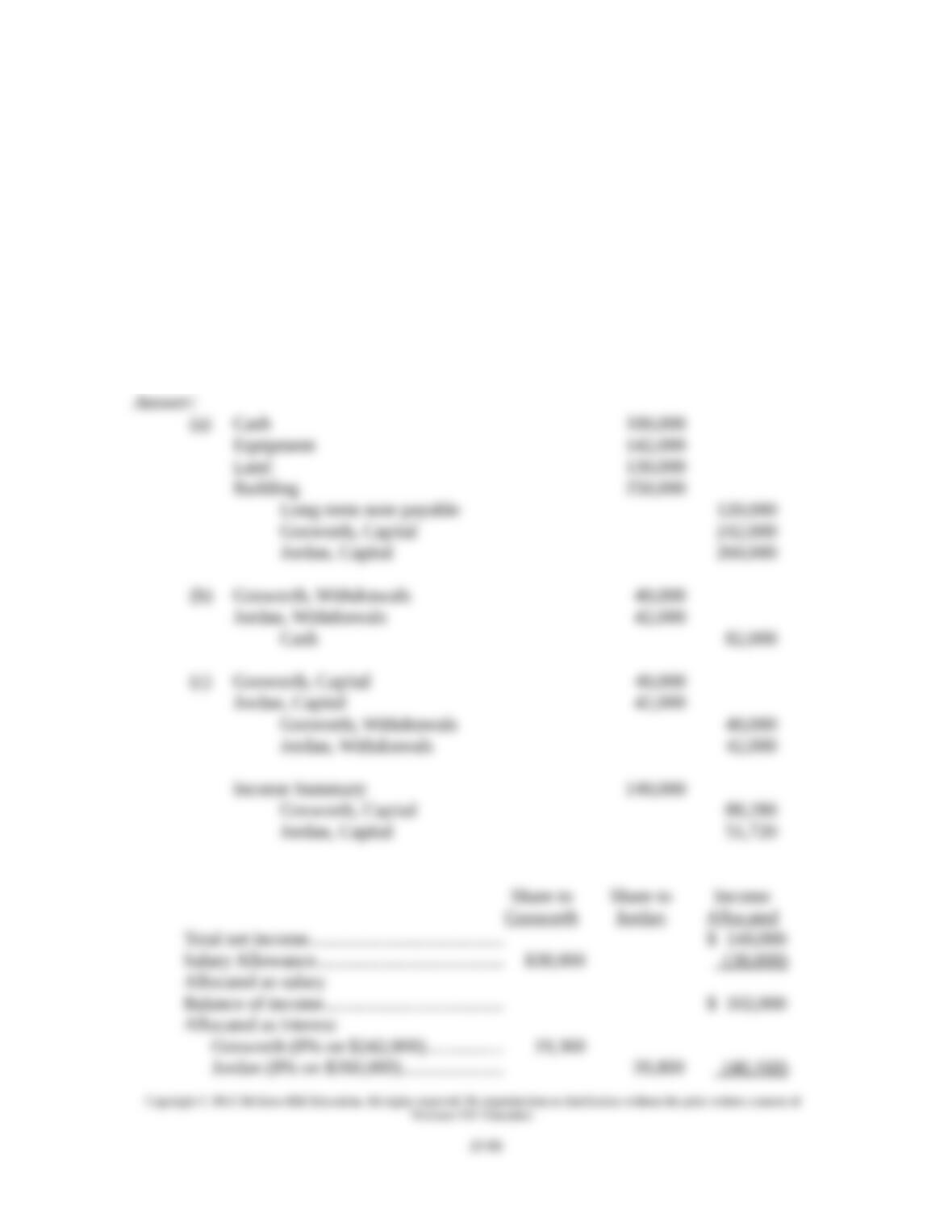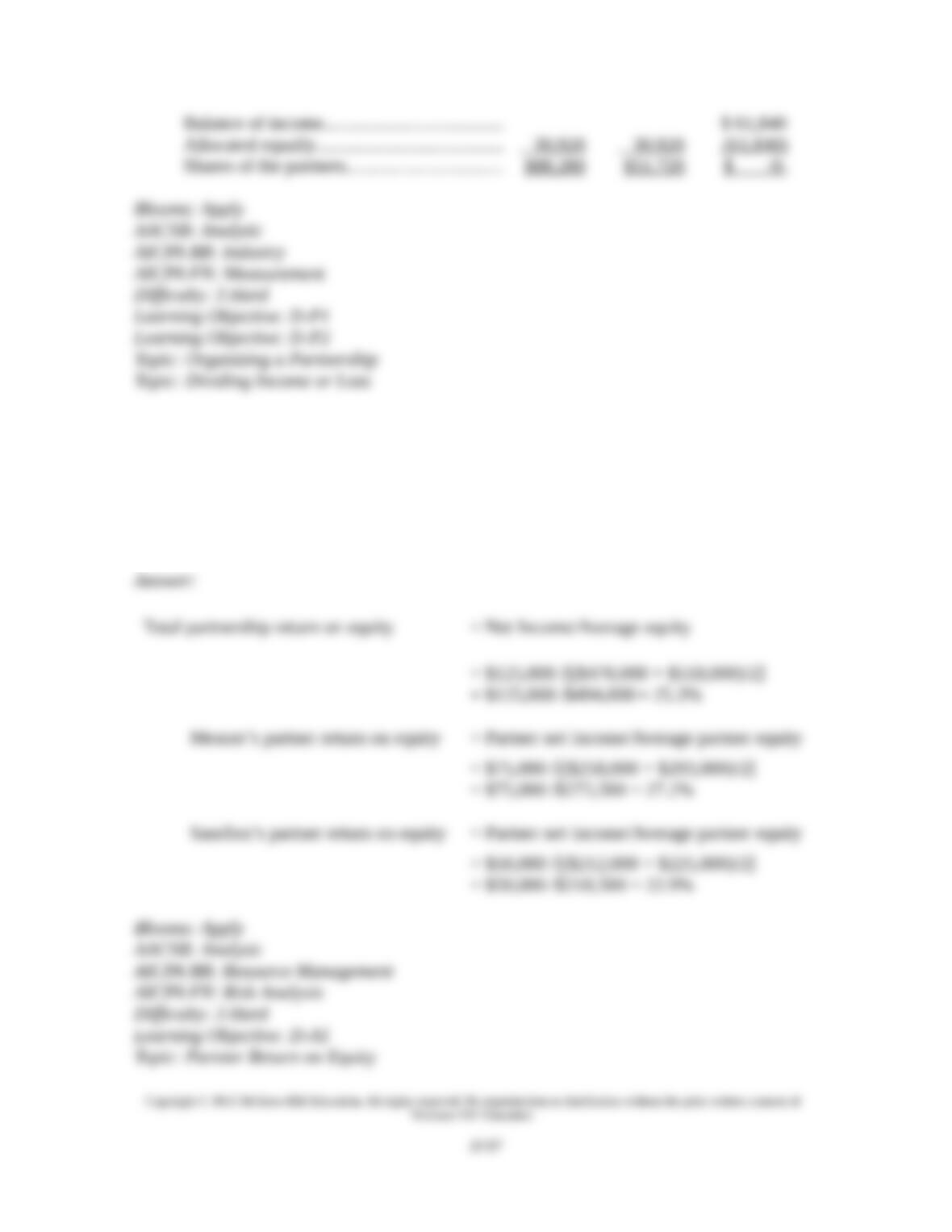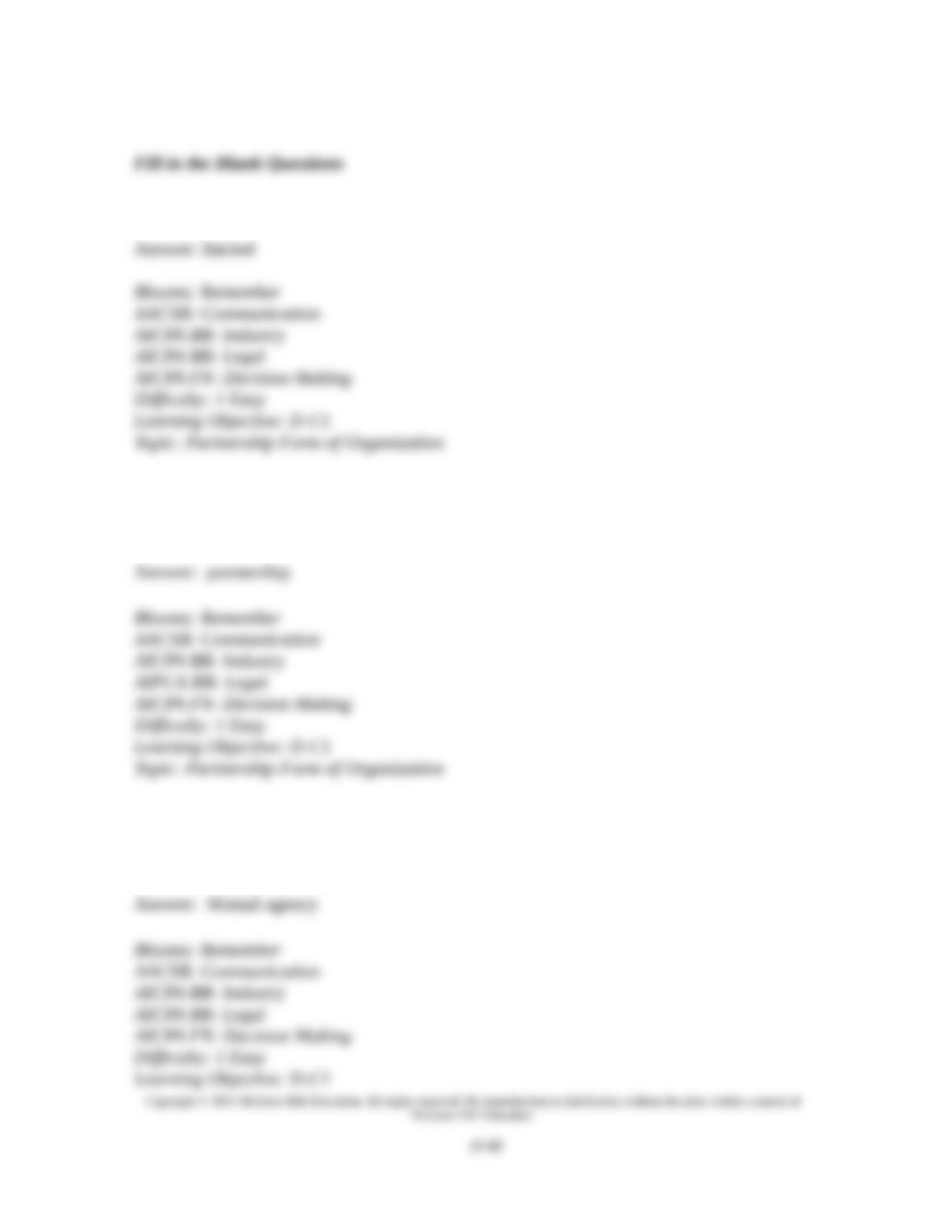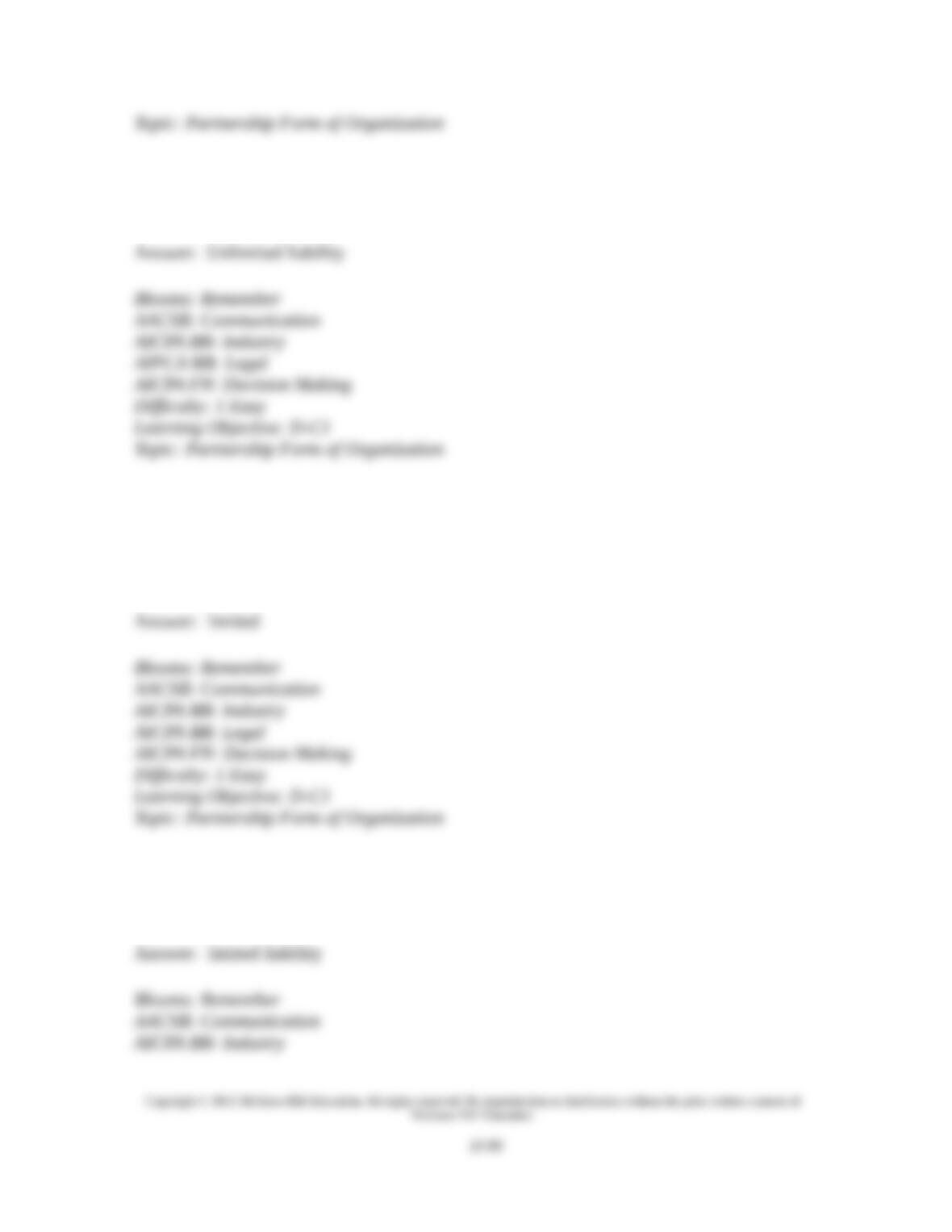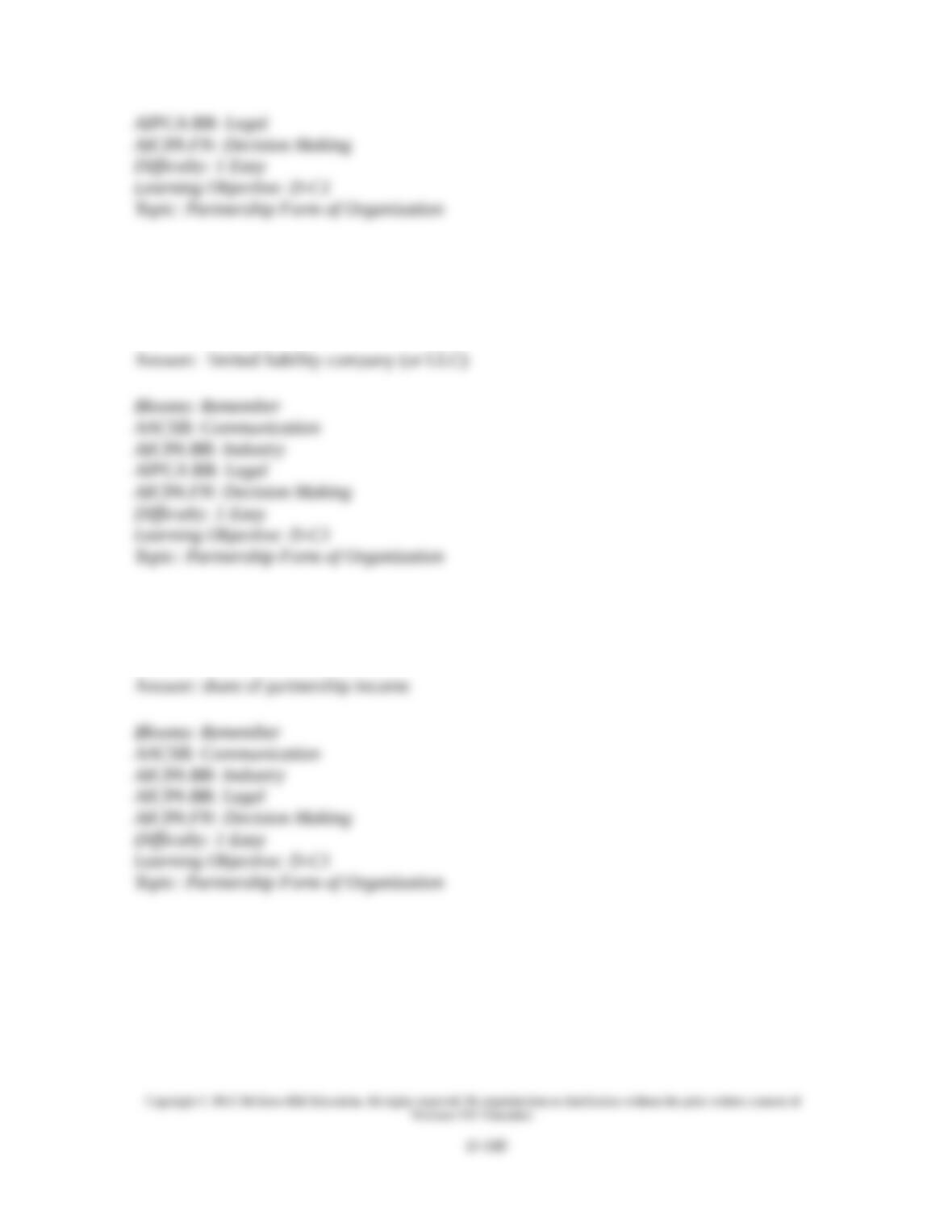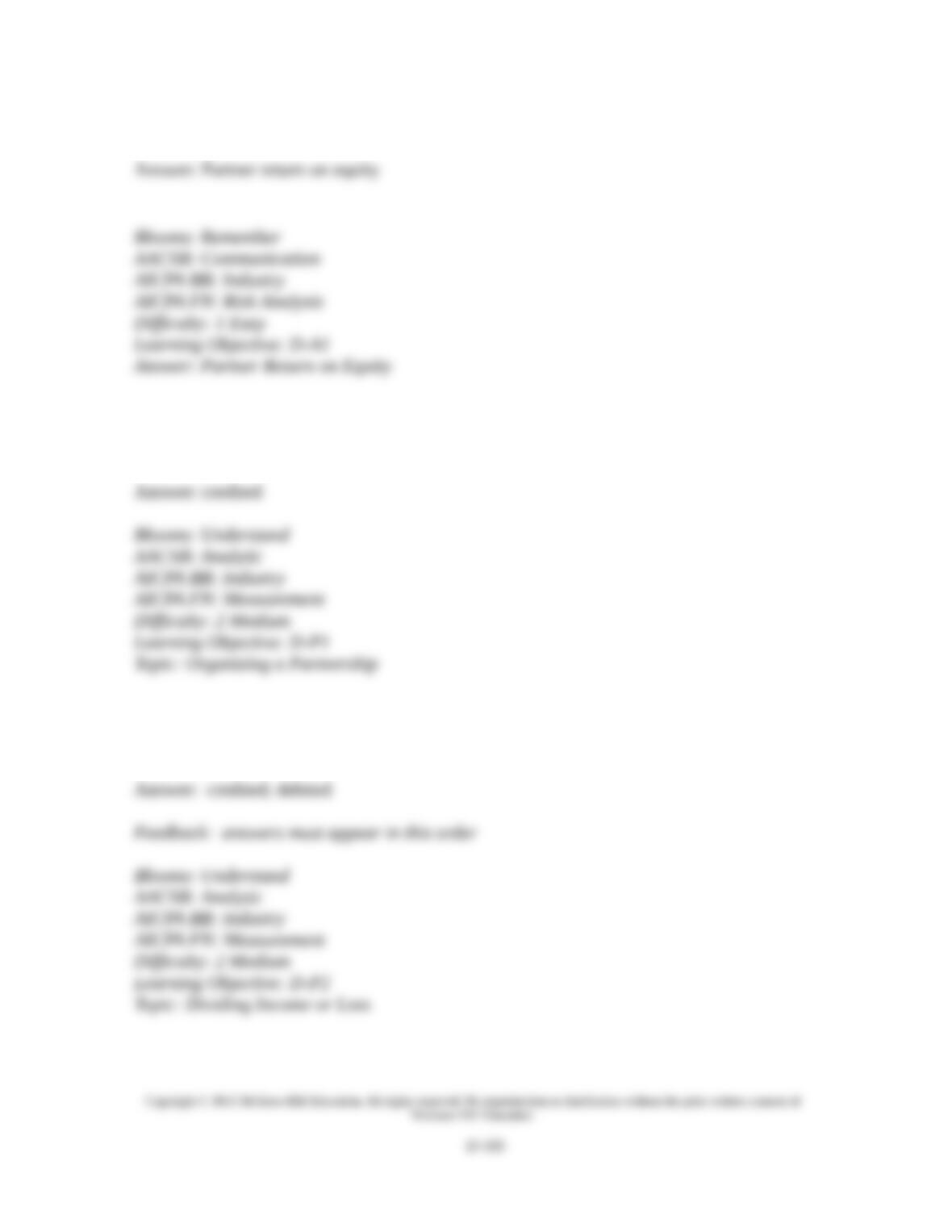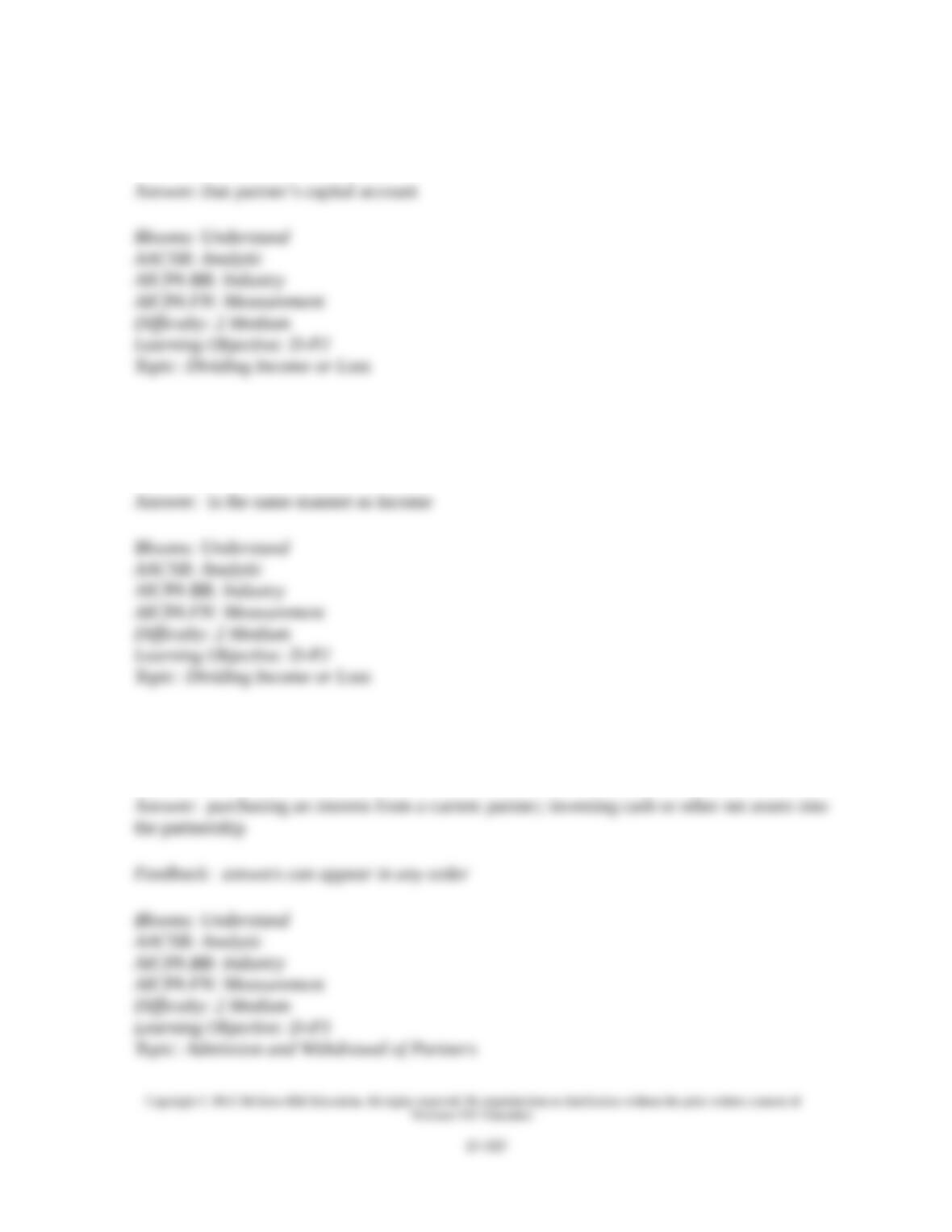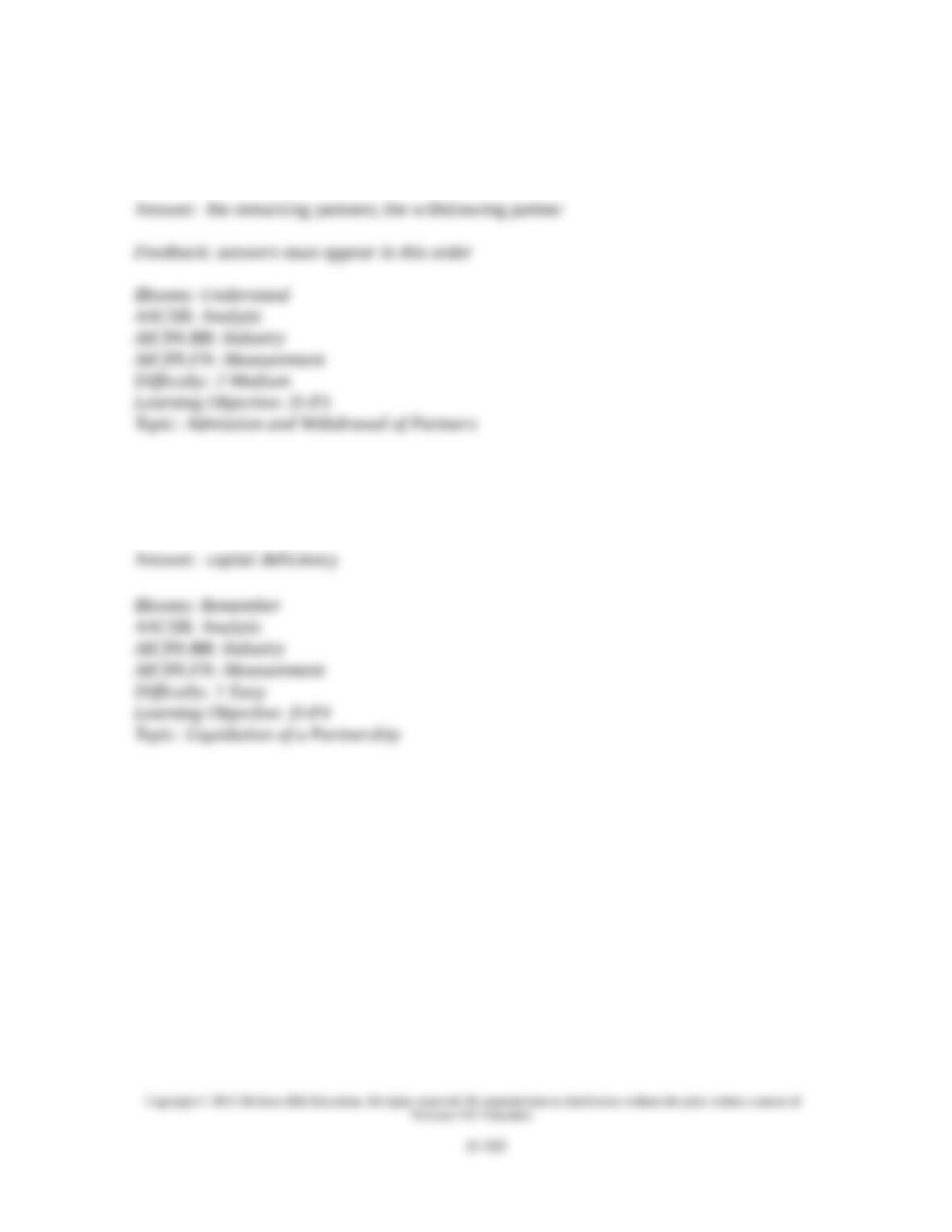74. Wright, Bell, and Edison are partners and share income in a 2:5:3 ratio. The partnership’s
capital balances are as follows: Wright, $33,000, Bell $27,000 and Edison $40,000. Edison
decides to withdraw from the partnership, and the partners agree not to revalue the assets
upon Edison’s retirement. The journal entry to record Edison’s June 1 withdrawal from the
partnership if Edison sells his interest to Whitney for $45,000 after the other two partners
approve Whitney as partner is:
A. Debit Edison, Capital $45,000; credit Whitney, Capital $45,000.
B. Debit Edison, Capital $40,000; credit Cash $40,000.
C. Debit Edison, Capital $40,000; debit Wright, Capital $2,500; debit Bell, Capital $2,500;
credit Whitney, Capital $45,000.
D. Debit Edison, Capital $40,000; credit Whitney, Capital $40,000.
E. Debit Edison, Capital $40,000; debit Cash $5,000; credit Whitney, Capital $45,000.
75. Wright, Bell, and Edison are partners and share income in a 2:5:3 ratio. The partnership’s
capital balances are as follows: Wright, $33,000, Bell $27,000 and Edison $40,000. Edison
decides to withdraw from the partnership, and the partners agree not to revalue the assets
upon Edison’s retirement. The journal entry to record Edison’s June 1 withdrawal from the
partnership if Edison is paid $40,000 for his equity is:
A. Debit Edison, Capital $40,000; credit Cash $40,000.
B. Debit Wright, Capital $20,000; Debit Bell, Capital $20,000; credit Cash $40,000.
C. Debit Wright, Capital $20,000; Debit Bell, Capital $20,000; credit Edison, Capital
$40,000.
D. Debit Edison, Capital $40,000; credit Wright, Capital $20,000; credit Bell, Capital
$20,000.
E. Debit Cash $40,000; credit Edison, Capital $40,000.
























































































